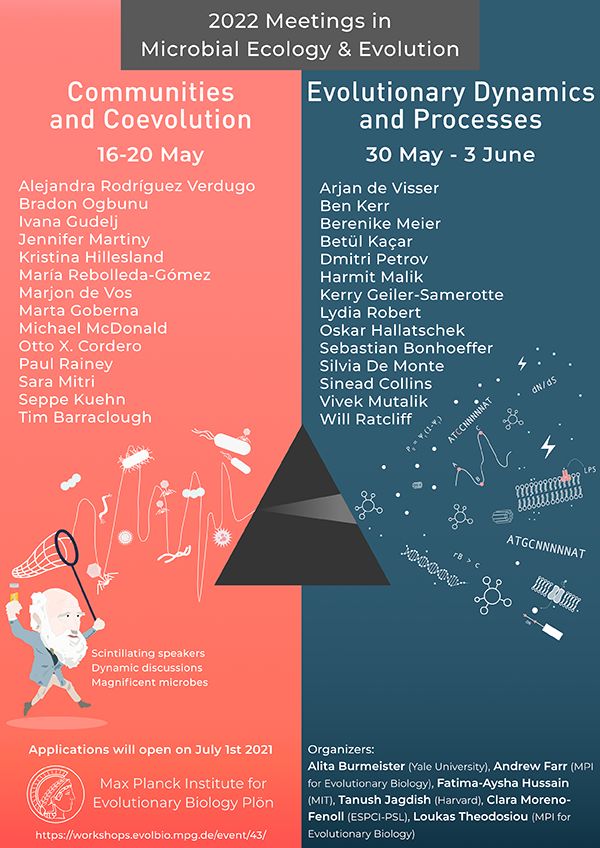Speaker
Description
Reciprocal interactions such as cooperation, parasitism, altruism, etc are strongly affected by population mixing and modes of transmission. However, the effect of population mixing on the evolutionary dynamics of prey-predator interactions remains largely unexplored. Hence, in a laboratory evolution experiment, we propagated bacterial predator-prey communities in two distinct transfer regimes. In the first regimen we mixed replicate populations periodically (horizontal transfer regime), and in the second treatment populations were not mixed (vertical transfer regime). To do so, we used Myxococcus xanthus as a generalist bacterial predator and Escherichia coli as a prey bacterium. Analysis of the evolved populations revealed that the prey populations from two regimens evolved different degrees of resistance to predation, and on average were more resistant to predation than their ancestors. Our results further demonstrate that prey from the horizontal regimen were under directional selection resulting in lesser phenotypic divergence within each population, and a higher degree of resistance to predation. Whereas in the vertical regimen, prey populations were under fluctuating selection resulting in higher phenotypic divergence in which isolates with both higher and lower degrees of resistance relative to ancestors were maintained. Surprisingly though, in contrary to our expectation, though predatory behaviour of evolved M. xanthus populations from both the regimens was different from each other, it was lower than their respective ancestors. Moreover, our results suggest that the intra-species competition plays an important role -if not more than the predatory pressure- during the evolution of prey bacteria. Together, we demonstrate that the population-mixing results in directional selection on prey bacteria (but not the predator), that selects for the evolution of increased resistance to predation over evolutionary time.

